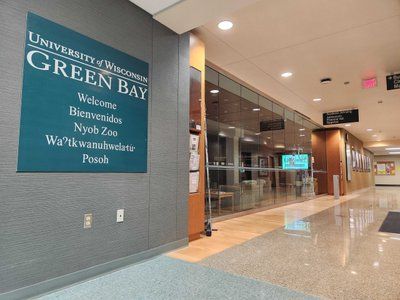By Tom Still
MADISON, Wis. – Brent Ridge worked for years just a few hundred yards from a nuclear waste storage site at the Columbia Generating Station near Richland, Wash. Because he was vice-chairman of the Nuclear Safety Review Board for Columbia, Ridge was confident he wasn’t putting his health in danger by working that close to radioactive material.
Today, as the chairman and chief executive officer for Wisconsin’s Dairyland Power Cooperative, Ridge is convinced the far bigger health danger facing him, his utility customers and the world is climate change – and he thinks more nuclear generation of electricity can help avoid irreversible damage.
“The bottom line is: If we are for a less-carbon future, if you are against carbon, you need to be for nuclear. I don’t know a simpler way to put it,” Ridge said during a May 24 Wisconsin Technology Council luncheon in Madison. “If you want there to be less carbon, and you want a reliable, safe, economic grid that will keep together our economic 24/7 engine, nuclear is part of that future.”
There are still those who cringe at the thought of nuclear power coming back into vogue, largely out of safety concerns but also over questions of cost per kilowatt-hour. However, Ridge and the Dairyland proposal to build a small-module reactor in its La Crosse-based service territory represent a rapidly emerging shift in industry, political and public attitudes.
The type of reactor envisioned by Dairyland isn’t your grandfather’s nuclear power plant – or Homer Simpson’s, for that matter. It would have independently operating modules that provide emissions-free energy as demand rises and falls, helping to smooth out the peaks and valleys of solar and wind power.
Rather than a replacement for solar, wind and other renewables, next-generation nuclear is being touted as a reliable supplement that can help meet peak demands in a transmission grid that must stop burning coal, sooner than later.
Paul Wilson, the Grainger professor of nuclear engineering and chair of the UW-Madison Department of Engineering Physics, told the group nuclear power can plug gaps as society scales back its reliance on fossil fuels over time. Wilson said more wind and solar development will come first, but those are intermittent sources that come with their own drawbacks.
“When we get down to those really low decarbonization levels, and we really want to get close to zero, then you need to have something that’s providing what we today call baseload … and you need some sort of low-carbon, firm, dispatchable power source,” he said. “… The only (source) that is really ready right now is nuclear. Without that, the system gets a lot more expensive and a lot less reliable.”
Some environmental groups remain firmly opposed to nuclear power. The Sierra Club’s Wisconsin chapter says nuclear energy “is not the answer to the climate crisis,” citing sustainability, pollution and safety risks, and economics.
However, there is a growing legion of people and groups that worry shutting down existing nuclear plants – Wisconsin has one remaining plant at Point Beach, north of Manitowoc – will make it much harder to reach climate goals by 2030 and beyond. Nuclear power accounts for 20% of the nation’s electricity today.
In fact, four states – New York, New Jersey, Connecticut and Illinois – have reversed course on efforts to close plants. The Biden administration has voiced support for small-module plants, such as the one that NuScale could build for Dairyland. With one nervous eye on Russia and its supply of oil and natural gas, many European Union countries are rethinking their opposition to nuclear power.
Some nations, most notably France, never backed off nuclear as a power source and have leapt ahead with technologies that recycle used fuel. Such fuel removed from reactors contains 96% of the energy needed to produce new fuel.
The Washington Post reported this week that some activists who opposed construction of California’s Diablo Canyon reactor decades ago are now urging the state to keep it open. It’s not a case of them turning their backs on solar and wind but recognizing society needs a range of generation options, especially at a time when electricity use is expected to climb.
Will others Wisconsin utilities follow Dairyland’s lead? Jeff Keebler, the president and CEO of Madison Gas & Electric, told the May 24 group the utility will continue to track a mix of low-carbon sources. In a regional grid that covers much of the Midwest and part of Canada, he noted, electrons can and will come from various generation sources.
Nuclear energy need not compete with renewables, but it can augment them in a world that needs both climate remedies and reliable power.
Still is president of the Wisconsin Technology Council. He can be reached at tstill@wisconsintechnologycouncil.com.





